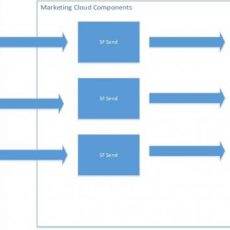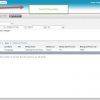The only thing permanent in life is change.
If you are a CRM leader tasked with defining your application roadmap and strategy, you may be overwhelmed sorting through the complexity of managing existing features, implementing business processes, supporting or developing new integrations to other applications, and keeping up with vendor upgrades. This 3-part series will cover strategies that you can use to define and develop your roadmap.
Few people could argue that one of the most helpful features on smartphones is the ability to map your location. However, knowing where you are is only part of the equation, a map can also tell you where you are going and how to get there, even when you’ll arrive. Put another way, is there anything more frustrating than being stuck in traffic or at an airport, with no idea when you will get to your destination? The users and stakeholders of business applications experience these same frustrations when there isn’t a clear plan that details what and when new processes or capabilities will be available. We can use these concepts to explain the importance and process of developing an application roadmap.
First, let’s define what an application roadmap is: a planned set of changes, projects, initiatives, and themes that cause a system and its users to evolve with new capabilities. A roadmap conveys both what and when new capabilities and processes will be enabled. Just like planning your next vacation, your application will follow a set of steps to arrive at the intended destination. Don’t forget that part of taking a trip is being prepared for detours, delays or changes that impact your ability to get to your destination!
Let’s assume for a minute you have employees, executive management, customers, and partners that all interact with your application. These individuals or groups all have needs, wants, asks and even demands – so how do you decide whose needs are addressed and when? Depending on your environment, you may have other, more technical needs that require remediation. Retirement of technical debt, software and hardware upgrades, and even planning for disaster recovery are examples of needs, or even demands, from the finite resources you have available.
First, start by summarizing the business goal(s) of your application. What does it do for your organization? Think about how your CRM application fulfills a business need or capability. It may help to think, what would my company do without this application? As you proceed through this process you will likely uncover that there are different people that have different goals. We can group these individuals into personas.
A persona is defined as a role that is played by one or more people that have similar wants, needs, goals and objectives. When you build out these personas, you’ll want to capture how success is measured for each. Key Performance Indicators (KPIs) are metrics that are used to evaluate performance against an objective. Each of the personas defined should have one or more KPIs that align to specific goals and objectives. For example, sales reps may have quotas, marketing departments may be responsible for generating leads, and service agents are tasked with managing support tickets. Well defined personas and their respective KPIs are a great way to organize how you will align your application to help achieve your organizational goals.
In the next article, I’ll elaborate on the various channels, methods, and data points you can use to further refine and develop your roadmap. In summary, the key takeaways are:
- What a roadmap is and why it’s important
- The first step to take: Define Personas
- Aligning your application to business KPIs Defining Your Application Roadmap for Success: Part II
Please subscribe
Subscribe to our mailing list and get tips to maximize salesforce to your email inbox.
I am honored to have your subscription. Stay tuned for tips to maximize your salesforce investment
Something went wrong.







